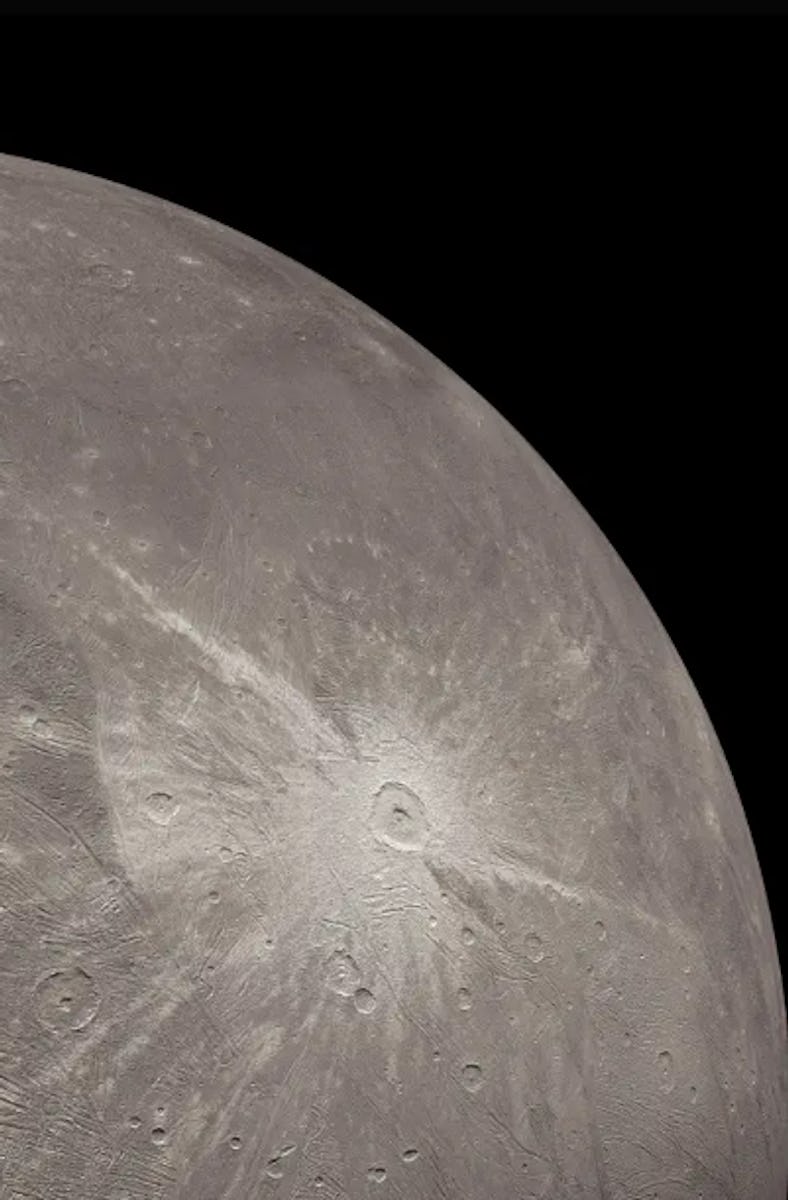NASA's Juno Spots Ingredients for Life on Jupiter’s Largest Moon
The seawater residue found on Ganymede contain several types of salt and possibly organic compounds called aldehydes, a precursor to the building blocks of life.

A mess of salt and organic chemicals splattered across the ice on Ganymede could be a hint that its hidden ocean contains the right stuff for life.
NASA’s Juno mission recently revealed that the surface of Jupiter’s largest moon is dotted with salts and organic chemicals (i.e. hydrogen and carbon — not always related to life but definitely a prerequisite). Planetary scientist Federico Tosi, of Italy’s National Institute for Astrophysics, and his colleagues say those patches of minerals could be evidence of water mingling with rock on the seafloor and mixing all sorts of nutrients into the alien moon’s ocean. And that could be a very good sign for habitability.
Tosi and his colleagues published their findings in the journal Nature Astronomy.
The Juno spacecraft’s Junocam instrument captured this detailed photo of Jupiter’s icy moon Ganymede during a June 2021 flyby.
Ganymede: Surprisingly Hospitable
If your eyes worked like an infrared spectrometer, the world would look very different. Every chemical element and compound emits, absorbs, and reflects light in different wavelengths, so you could glimpse a substance’s chemical makeup just by looking at it.
During a June 2021 flyby of Ganymede, NASA’s Juno spacecraft used its own infrared eyes, a spectrometer named the Jovian Infrared Auroral Mapper (JIRAM), to measure the components of the moon’s icy surface. Tosi and his team studied the JIRAM data and found the chemical fingerprints of several different salts and maybe even organic molecules called aldehydes.
“This suggests we are seeing the remnants of a deep ocean brine that reached the surface of this frozen world,” says Juno principal investigator and study co-author Scott Bolton in a statement.
Beneath its 95-mile-thick layer of ice, Ganymede is hiding an ocean 60 miles deep. Picture a world about the size of Mercury, with an ocean ten times deeper than Earth’s Challenger Deep trench, and then cover that deep alien ocean with ice 50 times thicker than the Laurentide Ice Sheet that covered North America during the last Ice Age.
It may not sound welcoming, but there may be some surprises lurking beneath the ice.
An Ocean To Call Home?
To have a livable ocean, you need more than just liquid water; you also need salts, other electrolytes, and nutrients like phosphates. Those ingredients get mixed into seawater when water covers rock or flows through networks of pores in the rock.
Juno’s recent findings suggest that at some point in its history, Ganymede’s oceans had at least some of those nutrients — and it’s just one of several icy worlds in our outer Solar System that may contain ingredients for habitability (and possibly even for life). James Webb Space Telescope data recently revealed carbon dioxide on the surface of Saturn’s moon Europa, and mixtures of salts and organic compounds have been spotted in an eruption on Saturn’s moon Enceladus and in a crater on dwarf planet Ceres.
For now, Earth remains an outlier when it comes to life in our Solar System, but perhaps we need to keep looking before we say anything for certain.